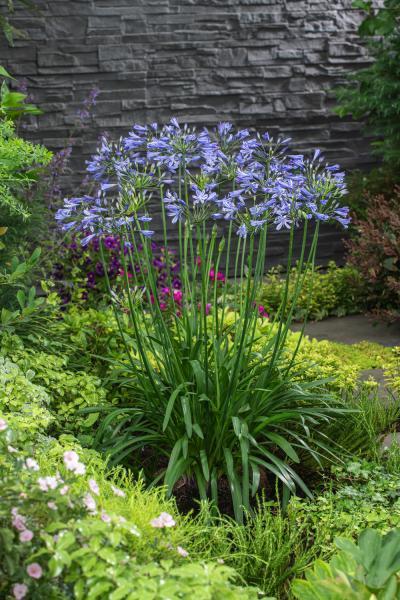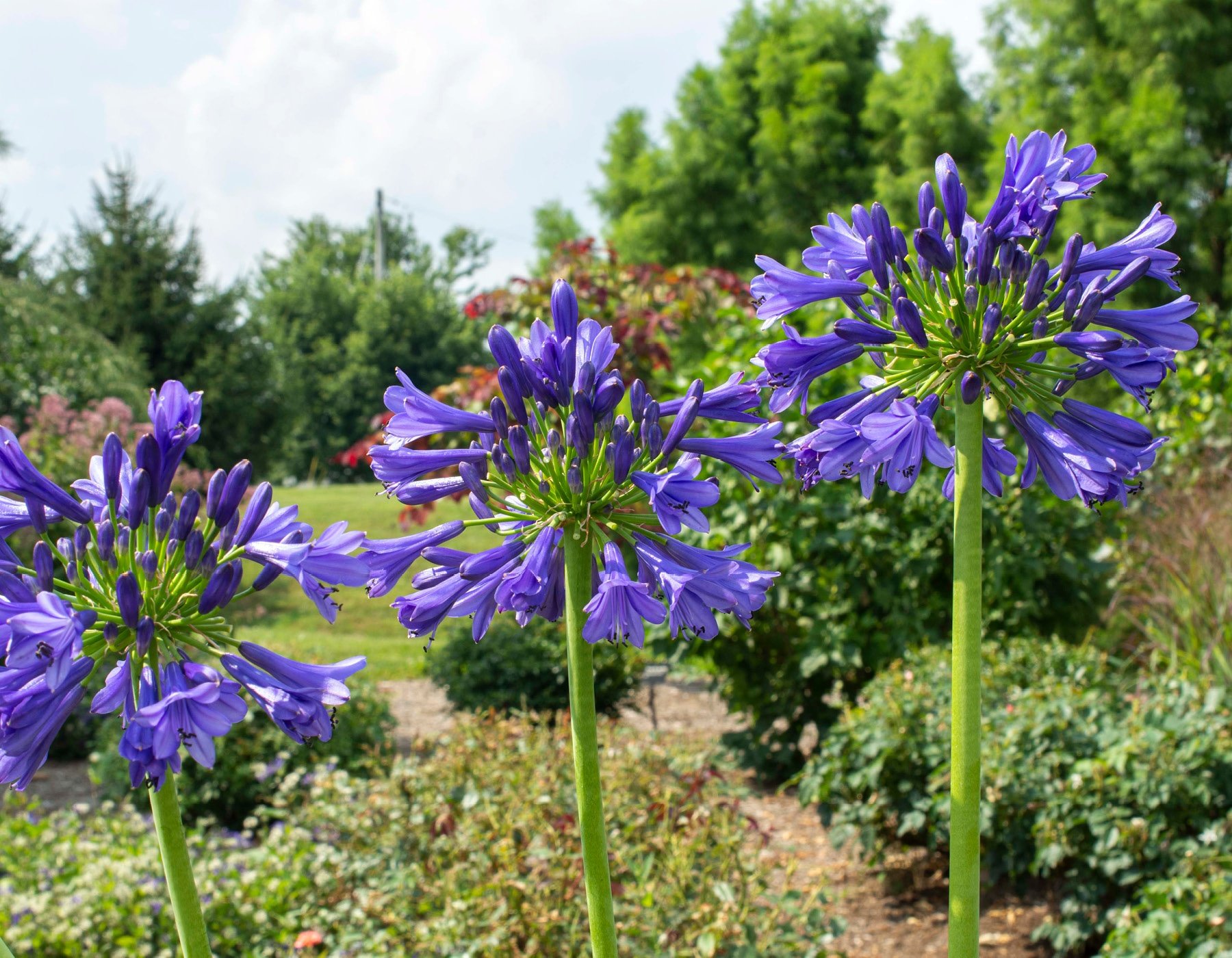Agapanthus Breeding: Tips for Expanding Your Plant Collection
Wiki Article
Releasing the Secret to Effective Agapanthus Farming: Tips and Techniques for a Flourishing Garden
In the world of gardening, cultivating agapanthus efficiently calls for a strategic strategy that encompasses different facets of plant treatment. With mindful attention to information, one can unlock the tricks to supporting these sensational blossoms, causing a garden that prospers with charm and vibrancy. By recognizing the nuances of agapanthus farming, one can create an environment where these plants prosper and bloom perfectly. In the following conversation, we will certainly explore crucial ideas and tricks that will direct you towards a flourishing agapanthus yard, providing understandings into ideal methods, dirt conditions, sprinkling methods, and more.Growing Agapanthus: Best Practices
When planting Agapanthus, appropriate dirt prep work is important for making certain effective growth and growth of these gorgeous flowers. Agapanthus, typically referred to as Lily of the Nile or African lily, prospers in well-draining soil with a somewhat acidic to neutral pH level - Agapanthus. Before growing, it is essential to modify heavy clay dirts with natural issue such as compost or peat moss to improve drain and supply crucial nutrients for the plantsTo grow Agapanthus, select a location that gets complete sunshine to partial color, as this will certainly advertise healthy growth and plentiful blooming. Dig a hole twice the size of the plant's origin round and put the Agapanthus at the exact same depth it was previously growing. Gently backfill the hole with dirt, pushing down securely to eliminate any type of air pockets around the roots.
Water the newly planted Agapanthus thoroughly and continue to maintain the dirt uniformly damp, especially throughout the plant's energetic growing period. Agapanthus. Using a well balanced fertilizer once a month can further sustain the plant's development and blooming. By complying with these ideal techniques for growing Agapanthus, you can create a magnificent display screen of these exciting flowers in your yard
Suitable Dirt Issues for Agapanthus
For ideal development and growing success of Agapanthus plants, making sure the dirt conditions are perfect is essential. Agapanthus likes soil that is abundant in nutrients, so including a balanced fertilizer throughout the expanding period can advertise healthy growth and vivid flowers.
Watering and Feeding Tips
To guarantee healthy growth and vibrant flowers, appropriate watering and feeding methods are important for successful Agapanthus growing. Agapanthus plants take advantage of routine watering, especially during the expanding season. It is recommended to water deeply when a week, making sure the soil is moist but not saturated. Throughout hot weather or in pots, even more constant watering may be required to avoid the dirt from drying totally.When it pertains to fertilizing Agapanthus, a well balanced plant food with equal components nitrogen, phosphorus, and potassium can be applied in the spring to promote healthy and balanced growth and flowering. Slow-release plant foods are suitable for offering nutrients gradually over an extended period. Stay clear of over-fertilizing, as this can cause extreme vegetation development at the cost of blooms.
In addition, integrating natural issue like compost right into the soil can enhance nutrient degrees and enhance dirt structure, assisting in the general wellness of the Agapanthus plants. By complying with these watering and feeding suggestions, gardeners can guarantee their Agapanthus plants thrive and create stunning screens of blossoms.
Pruning and Deadheading Techniques
Appropriate trimming and deadheading techniques play a critical role in keeping the health and looks of Agapanthus plants, complementing the necessary techniques of watering and fertilizing for effective farming. Trimming Agapanthus involves eliminating invested blossom heads, dead or yellowing fallen leaves, and overall shaping of the plant to advertise better growth. Deadheading, the process of getting rid of discolored flowers, not just boosts the plant's appearance additional hints yet additionally encourages additional blooming.When deadheading Agapanthus, it is a good idea to trim off the flower stem at the base utilizing sharp, tidy shears. This process redirects the plant's energy from seed manufacturing back right into origin and vegetation development, promoting a healthier and much more durable plant. Normal deadheading can extend the blooming duration of Agapanthus and prevent self-seeding, which can result in overcrowding.
In terms of pruning, Agapanthus typically take advantage of a light trim after blossoming to tidy up the plant and encourage fresh development. Reducing the invested flower stems and eliminating any type of damaged or dead foliage aids keep the plant's vitality and total look. However, it is important to prevent reducing into the crown of the plant, as this can compromise its health.

Protecting Agapanthus From Pests and Diseases
Carrying out reliable insect and condition administration approaches is important to guarding the health and wellness and vitality of Agapanthus plants in farming. One common insect that affects Agapanthus is the Agapanthus borer, a caterpillar that passages right into the plant, causing damages to the fallen leaves and flowers.In enhancement to insects, Agapanthus are prone to illness such as root rot and fungal leaf spots. By staying watchful and dealing with insect and disease issues promptly, garden enthusiasts can aid their Agapanthus grow and prosper.

Conclusion
To conclude, successful growing of agapanthus requires appropriate growing techniques, excellent soil problems, sufficient watering and feeding, routine trimming and deadheading, and security from conditions and insects. By following these ideas and tricks, garden enthusiasts can make sure a prospering yard filled up with stunning agapanthus flowers. Agapanthus. Bear in mind to maintain consistent treatment and interest to detail to promote the health and wellness and long life of these magnificent plantsWhen planting Agapanthus, appropriate dirt preparation is vital for making certain successful growth and advancement of these beautiful flowers.Water the recently planted Agapanthus thoroughly and continue to keep the soil evenly damp, specifically during the plant's energetic growing season.For optimum development and blooming success of Agapanthus plants, making sure the soil conditions are perfect is vital. When hair transplanting or planting web Agapanthus, make moved here certain the soil is well-prepared to provide the essential foundation for the plants to establish themselves effectively. One typical insect that influences Agapanthus is the Agapanthus borer, a caterpillar that tunnels right into the plant, triggering damage to the blossoms and leaves.
Report this wiki page